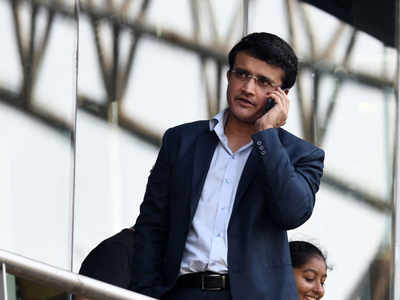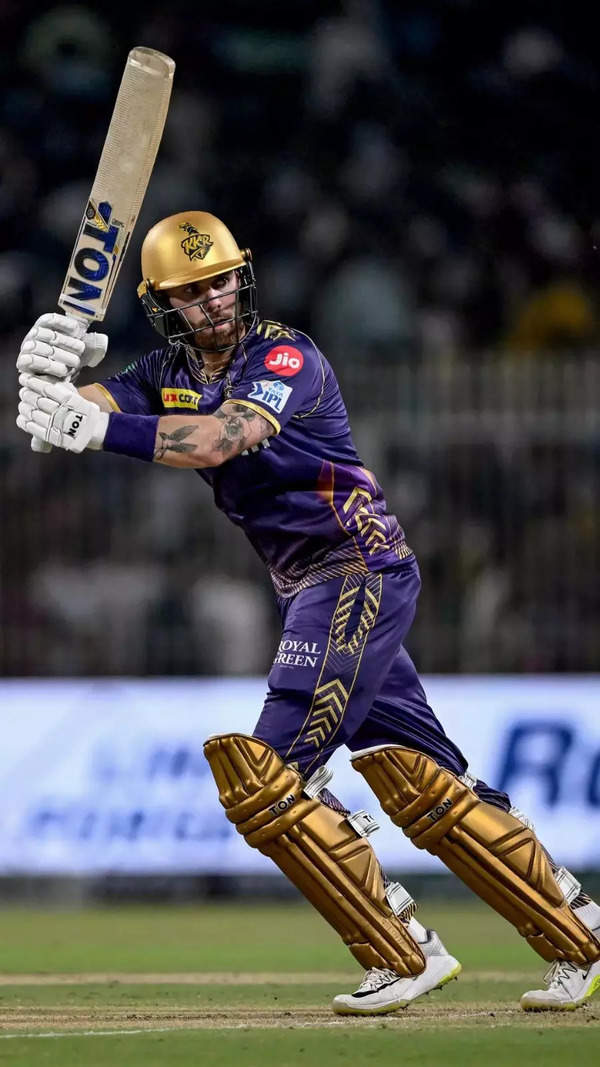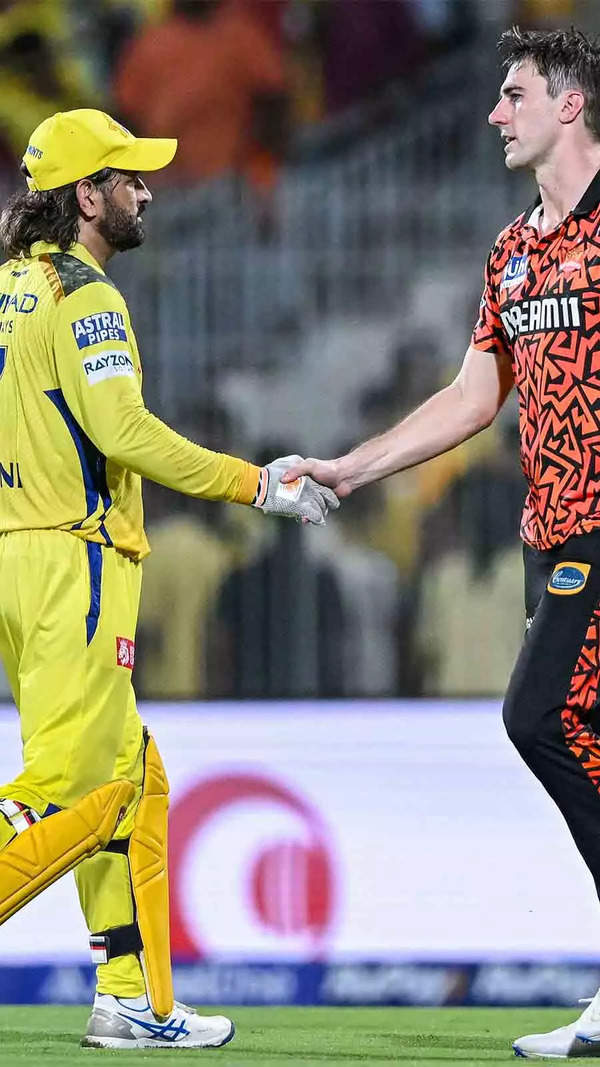- News
- Sports News
- Is Sourav Ganguly's recent heart attack a big wake-up call for forty-plus retired sportspersons?
Trending
This story is from January 13, 2021
Is Sourav Ganguly's recent heart attack a big wake-up call for forty-plus retired sportspersons?
Timely medical intervention prevented any further health crisis for the BCCI president, but what surprised many was a heart attack at just 48. Ganguly, who retired from all forms of cricket in 2011, leads a very active post-retirement life. The incident, thus, raised a very pertinent question: Can former sportspersons be in the high-risk category, especially for something like heart ailments at a relatively young age?

BCCI president and former India captain Sourav Ganguly recently suffered a heart attack (TOI Photo)
NEW DELHI: After the sudden and surprising news of former India cricketer Sourav Ganguly suffering a heart attack, a deeper investigation of the health scares former sportspersons might be at risk of in their forties is needed.
Timely medical intervention prevented any further health crisis for the BCCI president, but what surprised many was a heart attack at just 48.
Ganguly, who retired from all forms of cricket in 2011, leads a very active post-retirement life.The incident, thus, raised a very pertinent question: Can former sportspersons be in the high-risk category, especially for something like heart ailments at a relatively young age?
It's an obvious question after what happened with Ganguly, who was diagnosed with as many as three blocked coronary arteries and had to undergo an angioplasty.
 (Sourav Ganguly is current recuperating at home after being discharged from the hospital earlier in January - Twitter Photo)
(Sourav Ganguly is current recuperating at home after being discharged from the hospital earlier in January - Twitter Photo)
Forties is not considered to be an age-bracket in which the heart could be in bad condition, especially for professional sportspersons.
From a sedentary lifestyle to mental stress of any nature, the contributing factors of heart disease, etc., can be many. It's true even if the individual in question has led a fairly fit life as a professional sportsperson for many years. But the best persons to analyse and talk about that would be the athletes themselves.
Timesofindia.com got in touch with the active quadragenarian cricketer Pravin Tambe, who turned 49 in October last year, and former first-class player Hari Gidwani for their thoughts. At one point in time, Gidwani had three blocked arteries himself and underwent an open heart surgery .
"I think discipline," said Tambe when asked about the key to staying fit in the 40s and also in the context of continuing to play.
"If anybody (in the 40s) wants to play cricket with the same passion (as during a young age), you have to be fit," he added. "So discipline should be there, day-to-day routine should be there.
"If you skip any of these after 40, I don't think you will be able to play on the ground. You have to manage everything." Tambe, who at the age of 41 became the oldest player to play in the IPL in 2013 for the Rajasthan Royals, told TimesofIndia.com.
 (Pravin Tambe, 49, still plays in the T20 professional leagues around the world - Twitter Photo)
(Pravin Tambe, 49, still plays in the T20 professional leagues around the world - Twitter Photo)
But it's not like most retired sportspersons don't exercise at all. Ganguly himself follows a daily routine to stay fit in between his busy schedule as the BCCI boss. In fact, the blackout he experienced preceding the "mild heart attack" was during a workout session.
That then begs the question - do former sportspersons need to follow a different fitness regime as compared to other people of the same age? Since their bodies are used to a certain level of fitness for many years, do they need to be extra careful?
Gidwani, who is 67 now and played as a batting all-rounder for Bihar and Delhi during his first-class career (119 matches), shared his experience of the days soon after he quit the game.
He was diagnosed with blockages in three arteries, which turned so bad that he had to undergo an open heart surgery.
His was a case of letting go after retirement.
 (Hari Gidwani was a batting all-rounder during his first-class career)
(Hari Gidwani was a batting all-rounder during his first-class career)
"I used to do a lot of exercise. But after leaving cricket, I started following a sedentary lifestyle. I didn't follow a proper diet. I started eating anything without giving any thought," he said.
Gidwani agreed with Tambe that "discipline" is the key to maintaining fitness levels post an active career as an athlete.
"I should have followed some kind of discipline as far as eating was concerned. Due to that, I had to undergo open-heart surgery. Three of my arteries were (almost) completely blocked: one was 100%, another 90% and the third one was 70%.
"All that happened due to my sedentary lifestyle and bad eating habits." Gidwani further told TimesofIndia.com. "If I was disciplined enough in terms of my eating habits and lifestyle, I wouldn't have suffered."
Gidwani also made a very interesting point, referring to the lifestyle that someone like Rahul Dravid is leading after retirement. Since Dravid is involved with active coaching and supervision of cricketers, he has a chance to still get a lot of active exercise.
 (Rahul Dravid is currently the Head of Cricket Operations at the National Cricket Academy in Bengaluru)
(Rahul Dravid is currently the Head of Cricket Operations at the National Cricket Academy in Bengaluru)
"The best thing a cricketer can do is that whatever he has got from cricket, he should give it back to budding cricketers by (way of) coaching.
"With this, he can keep himself fit. Coaching means he will be involved in physical activities and will follow the routines the way he used to during his playing days," Gidwani opined.
"It is important to stay attached to sports after retirement as well. Rahul Dravid is the biggest example before us."
But what about former sportspersons who have gone into either administration or something else? They perhaps need to be extra careful because their bodies are not getting the same kind of exercise they were used to earlier.
Both Tambe and Gidwani also agreed on stress being one of the factors behind medical conditions these days.
In Ganguly's case, he carries the burden of BCCI operations on his shoulders. Before that, he was the president of the Cricket Association of Bengal. He also keeps himself busy with multiple endorsements and also hosts a very popular Bengali quiz show.
 (Ganguly was the CAB president before becoming the BCCI chief - TOI Photo)
(Ganguly was the CAB president before becoming the BCCI chief - TOI Photo)
"I think it (stress factor) depends from person to person. We know Sourav Ganguly is fit, but it's also about his daily life. What he does, what he eats, whether he is doing fitness (related activities) for certain things, like walking and all." said Tambe.
"Maybe because of his (Ganguly) travelling and everything, his body had been under stress. He may be hardly getting time for himself, thinking about how to develop Indian cricket and all."
Gidwani was in agreement with Tambe.
The sentiment that was echoed again was that not all sportspersons are able to continue to follow a high-level fitness regime post retirement.
Are such people more at risk then, because their bodies have been used to a certain amount of regular exercise and certain sustained fitness levels for a long time?
 (Gidwani with Bishan Singh Bedi, who was his captain when he played Ranji Trophy for Delhi)
(Gidwani with Bishan Singh Bedi, who was his captain when he played Ranji Trophy for Delhi)
"The body is too used to doing exercises during playing days, and you suddenly give up doing exercise. After retirement, it will affect your health.
"We know how busy he (Ganguly) is these days after becoming the BCCI president. Probably he suffered this (heart) attack due to stress," Gidwani told TimesofIndia.com.
"I am just guessing, not sure. But I am so happy that he is back home fit and fine now."
Post retirement, regardless of sport, staying physically active and following a certain disciplined regime of rigorous exercise is very important.
Retired athletes cannot be expected to train and exercise the way they did when they were active athletes. However, exercise and physical exertion, perhaps, has to be somewhere between what the body was used to and the minimum that the body needs.
Timely medical intervention prevented any further health crisis for the BCCI president, but what surprised many was a heart attack at just 48.
Ganguly, who retired from all forms of cricket in 2011, leads a very active post-retirement life.The incident, thus, raised a very pertinent question: Can former sportspersons be in the high-risk category, especially for something like heart ailments at a relatively young age?
It's an obvious question after what happened with Ganguly, who was diagnosed with as many as three blocked coronary arteries and had to undergo an angioplasty.

Forties is not considered to be an age-bracket in which the heart could be in bad condition, especially for professional sportspersons.
From a sedentary lifestyle to mental stress of any nature, the contributing factors of heart disease, etc., can be many. It's true even if the individual in question has led a fairly fit life as a professional sportsperson for many years. But the best persons to analyse and talk about that would be the athletes themselves.
Timesofindia.com got in touch with the active quadragenarian cricketer Pravin Tambe, who turned 49 in October last year, and former first-class player Hari Gidwani for their thoughts. At one point in time, Gidwani had three blocked arteries himself and underwent an open heart surgery .
"I think discipline," said Tambe when asked about the key to staying fit in the 40s and also in the context of continuing to play.
"If anybody (in the 40s) wants to play cricket with the same passion (as during a young age), you have to be fit," he added. "So discipline should be there, day-to-day routine should be there.
"If you skip any of these after 40, I don't think you will be able to play on the ground. You have to manage everything." Tambe, who at the age of 41 became the oldest player to play in the IPL in 2013 for the Rajasthan Royals, told TimesofIndia.com.

But it's not like most retired sportspersons don't exercise at all. Ganguly himself follows a daily routine to stay fit in between his busy schedule as the BCCI boss. In fact, the blackout he experienced preceding the "mild heart attack" was during a workout session.
That then begs the question - do former sportspersons need to follow a different fitness regime as compared to other people of the same age? Since their bodies are used to a certain level of fitness for many years, do they need to be extra careful?
Gidwani, who is 67 now and played as a batting all-rounder for Bihar and Delhi during his first-class career (119 matches), shared his experience of the days soon after he quit the game.
He was diagnosed with blockages in three arteries, which turned so bad that he had to undergo an open heart surgery.
His was a case of letting go after retirement.

"I used to do a lot of exercise. But after leaving cricket, I started following a sedentary lifestyle. I didn't follow a proper diet. I started eating anything without giving any thought," he said.
Gidwani agreed with Tambe that "discipline" is the key to maintaining fitness levels post an active career as an athlete.
"I should have followed some kind of discipline as far as eating was concerned. Due to that, I had to undergo open-heart surgery. Three of my arteries were (almost) completely blocked: one was 100%, another 90% and the third one was 70%.
"All that happened due to my sedentary lifestyle and bad eating habits." Gidwani further told TimesofIndia.com. "If I was disciplined enough in terms of my eating habits and lifestyle, I wouldn't have suffered."
Gidwani also made a very interesting point, referring to the lifestyle that someone like Rahul Dravid is leading after retirement. Since Dravid is involved with active coaching and supervision of cricketers, he has a chance to still get a lot of active exercise.

"The best thing a cricketer can do is that whatever he has got from cricket, he should give it back to budding cricketers by (way of) coaching.
"With this, he can keep himself fit. Coaching means he will be involved in physical activities and will follow the routines the way he used to during his playing days," Gidwani opined.
"It is important to stay attached to sports after retirement as well. Rahul Dravid is the biggest example before us."
But what about former sportspersons who have gone into either administration or something else? They perhaps need to be extra careful because their bodies are not getting the same kind of exercise they were used to earlier.
Both Tambe and Gidwani also agreed on stress being one of the factors behind medical conditions these days.
In Ganguly's case, he carries the burden of BCCI operations on his shoulders. Before that, he was the president of the Cricket Association of Bengal. He also keeps himself busy with multiple endorsements and also hosts a very popular Bengali quiz show.

"I think it (stress factor) depends from person to person. We know Sourav Ganguly is fit, but it's also about his daily life. What he does, what he eats, whether he is doing fitness (related activities) for certain things, like walking and all." said Tambe.
"Maybe because of his (Ganguly) travelling and everything, his body had been under stress. He may be hardly getting time for himself, thinking about how to develop Indian cricket and all."
Gidwani was in agreement with Tambe.
The sentiment that was echoed again was that not all sportspersons are able to continue to follow a high-level fitness regime post retirement.
Are such people more at risk then, because their bodies have been used to a certain amount of regular exercise and certain sustained fitness levels for a long time?

"The body is too used to doing exercises during playing days, and you suddenly give up doing exercise. After retirement, it will affect your health.
"We know how busy he (Ganguly) is these days after becoming the BCCI president. Probably he suffered this (heart) attack due to stress," Gidwani told TimesofIndia.com.
"I am just guessing, not sure. But I am so happy that he is back home fit and fine now."
Post retirement, regardless of sport, staying physically active and following a certain disciplined regime of rigorous exercise is very important.
Retired athletes cannot be expected to train and exercise the way they did when they were active athletes. However, exercise and physical exertion, perhaps, has to be somewhere between what the body was used to and the minimum that the body needs.
End of Article
FOLLOW US ON SOCIAL MEDIA










